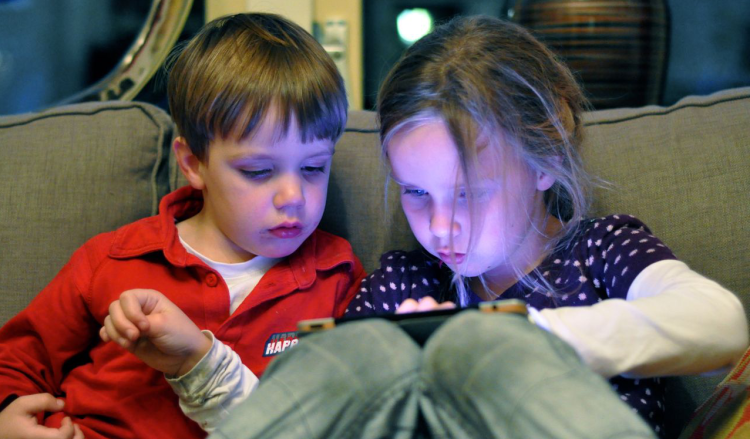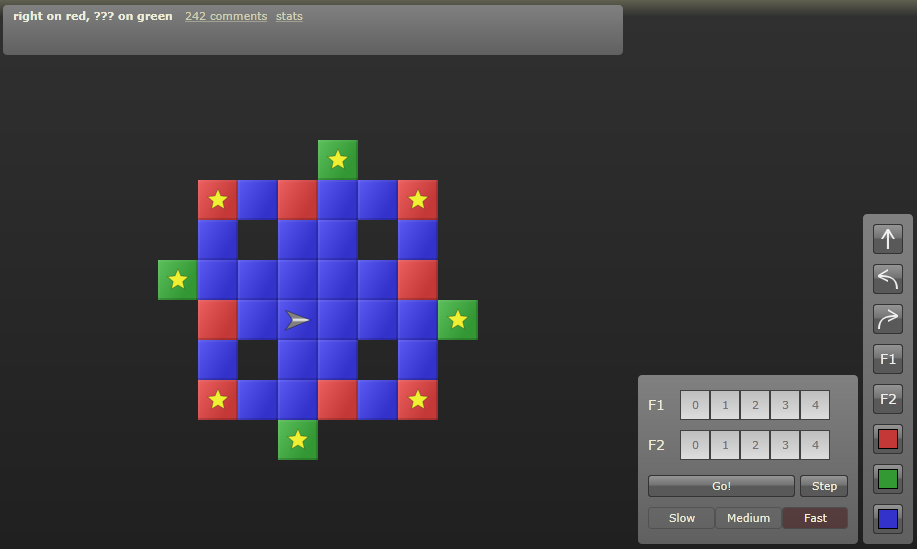Coding is a big deal right now. Worldwide, 36 million kids have taken part in “Hour of code” activities, helping them become active, rather than passive users of technology and starting learning that might one day help secure a job in our increasingly tech-driven world.
Even if your kids don’t go on to code for living, a basic understanding of programming concepts improves problem-solving and thinking skills which are both transferable and empowering. Microsoft chairman Bill Gates says that: “Learning to write programs stretches your mind and helps you think better, creates a way of thinking about things that I think is helpful in all domains.“
Platforms like Scratch and Alice let children (and adults) create their own games and animations using simplified coding methods. But not all kids can or want to jump straight into these sort of environments. For them, there are plenty of games around that will teach the basics of programming in a fun and accessible way.
We’ve sorted through some of the ever-widening options available, including a few still in development, so you don’t have to. They cut across multiple platforms — iOS, Android, PC, Mac, even board games — and many are free to pick up and play straight away.
Lightbot and Lightbot Jr.
Who it’s for: Ages 4-8 (Lightbot Jr.), 9+ (Lightbot)
Platforms: Web browsers, iOS, Android
Pricing: Free (browser), $3 (iOS/Android)
Find out more: Browser game, iTunes, Google Play
The expert view: “Although it seems simple, Lightbot foreshadows some interesting aspects of more sophisticated computer programming” — Fritz Ruehr, Associate Professor of Computer Science, Willamette University, Ore.
Lightbot is a programming puzzle game from Danny Yaroslavski, a Canadian university student. The goal is to make your robot light up all of the blue tiles on a 3D grid. The twist is that you have to do this in one run by programming your robot with a series of instructions.
Yaroslavski says that Lightbot teaches concepts like planning, testing, debugging, procedures, and loops. Your kids will just enjoy getting the endearing robot to light up everything in one turn.
You can play a free version, suitable for an hour of gameplay, on your mobile device or through your browser. Two full versions of Lightbot, for different age groups, are on sale on iTunes and Google Play.
Code Monkey Island
Who it’s for: Ages 8+
Platforms: Board game
Pricing: $40+
Find out more: Code Monkey Island website, Kickstarter
The expert view: “Code Monkey Island is a crazy-fun board game that introduces kids to programming.” — Educator and technology-access activist Phil Shapiro
Brooklyn resident Raj Sidhu wanted to introduce programming basics to kids in a fun way. He chose a low-tech solution for a high-tech problem and embedded concepts like Boolean logic and conditional statements in a family-friendly board game.
Code Monkey Island is straightforward to play and takes about 45 minutes. Players use cards with statements such as, “For each monkey NOT on a rock, move 3 spaces,” to move their troop of monkeys around the island.
Sidhu chose a board game because these bring families together. “I wanted to create an experience that kids, parents, and grandparents could share and in the process allow children to exercise their immense learning capabilities through play,” he said on his Kickstarter page.
Code Monkey Island ran a successful Kickstarter, and copies should ship in August. You can secure one by backing the project for $40 or more.
Kodable
Who it’s for: Ages 5-8
Platforms: iOS
Pricing: Free ($7 for the Pro version)
Find out more: Kodable website, iTunes
The expert view: “Kodable scaffolds programming skills so that young children can learn how to code. They don’t even have to know how to read. ” — Terri Eichholz, teacher of K-5 gifted students, South Central Texas
Kodable’s 105 maze-like levels help teach young kids programming concepts like conditions, loops, functions, and debugging.
It avoids using text entirely, making it a great entry point for younger children. Its alien protagonists are fuzzy and colorful and seem to have that kid appeal nailed down.
“Adults are so terrified of programming; it’s this scary thing,” Kodable co-founder Grechen Huebner told TechRepublic. “It’s funny how much adults underestimate kids, and giving them an opportunity to be challenged at such an early age proves how smart they are.”
The free version of Kodable includes the first 45 levels. In-app purchases can unlock more levels and concepts. The $7 Pro version also adds vocabulary lessons and learning guides.
Robozzle
Who it’s for: Ages 6+ (and adults)
Platforms: Web browsers, iOS, Android, Windows phone
Pricing: Free (browser), free to $2 (mobile)
Find out more: Browser game, iTunes, Google Play, Windows store
The expert view: “Robozzle bills itself as a social puzzle game, but to me it’s a fun and interesting way to introduce programming concepts. And perhaps it is a game to get young people interested in programming.” — High school computer-science teacher Alfred Thompson
If you’re looking for challenge for older kids (or yourself), try Robozzle. It’s a puzzle game that Microsoft programmer Igor Ostrovsky created in his free time.
Robozzle tasks you with guiding a robot through a series of mazes using limited commands. The levels range from those suitable for younger children right up to puzzles that will make seasoned coders scratch their heads.
It’s free to play through browsers (using Silverlight), and community support enables players to create, vote, and comment on new levels.
Versions of Robozzle exist for iOS, Windows Phone 7, and Android. Prices vary.





